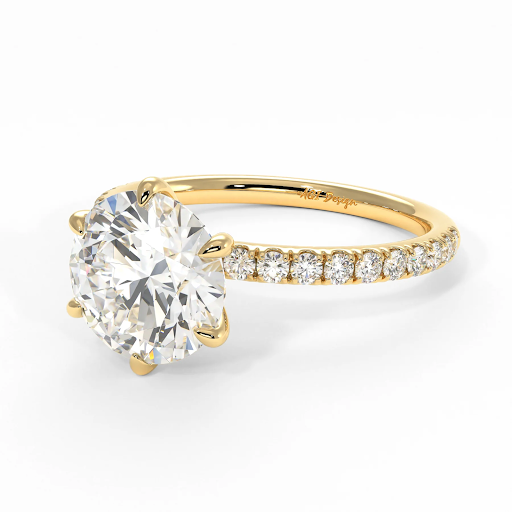Diamonds have long been cherished for their exquisite beauty and symbolism of eternal love. However, the traditional diamond industry has faced criticism for its environmental impact and ethical concerns related to mining practices. In recent years, lab-grown diamond rings have emerged as a sustainable alternative that captures the essence of timeless beauty. With lab-grown diamonds, couples can come together to show their commitment to environmental and ethical values while still cherishing the symbol of eternal love. In this post, we will delve into the world of lab-grown diamond rings, exploring their creation, and factors to be considered by conscious consumers.
The Rise of Lab-Grown Diamonds
Lab-grown diamonds are synthetic diamonds created in a laboratory setting using technology that replicates the conditions necessary for diamond formation. They are identical to naturally occurring diamonds in terms of physical, chemical, and optical characteristics, but they can be produced much more quickly.
How are Lab-Grown Diamonds Made?
Lab-grown diamonds are created using two primary methods: High Pressure-High Temperature (HPHT) and Chemical Vapor Deposition (CVD). In the HPHT method, a diamond seed is placed in a chamber with carbon and subjected to extreme heat and pressure, allowing the carbon atoms to form a diamond crystal. The CVD method involves introducing a carbon-rich gas into a chamber and using microwave energy to break down the gas molecules, resulting in the deposition of diamond layers on a substrate.
Lab-Grown Diamonds vs. Natural Diamonds: What Sets Them Apart?
Lab-grown diamonds and natural diamonds share similar physical characteristics, brilliance, and durability. However, there are a few notable distinctions between the two. Natural diamonds are formed deep within the Earth’s crust over billions of years, while lab-grown diamonds are created in a matter of weeks or months. Additionally, lab-grown diamonds may exhibit slight differences in color and clarity due to variations in the growth process.
Environmental Benefits of Lab-Grown Diamonds
The production of lab-grown diamonds requires significantly fewer resources compared to mining natural diamonds. These diamonds are grown in a controlled environment, eliminating the need for extensive land excavation and the associated destruction of ecosystems. Additionally, lab-grown diamonds minimize water usage and have a lower carbon footprint, making them a greener choice for environmentally conscious individuals.
Factors to Consider When Choosing Lab-Grown Diamond Rings
1. Quality
The quality of a lab-grown diamond ring is determined by various factors, similar to natural diamonds. These include the 4Cs: cut, color, clarity, and carat weight. Lab-grown diamonds are graded using the same standards as natural diamonds. Ensure that the custom engagement ring you choose has an excellent cut for maximum brilliance, a desirable color grade, high clarity, and the appropriate carat weight that fits your preferences.
2. Certification
To ensure the authenticity and quality of your lab-grown diamond ring, it is crucial to look for reputable certification. Reputable gemological laboratories, such as the Gemological Institute of America (GIA) or the International Gemological Institute (IGI), provide certifications for lab-grown diamonds. These certifications guarantee that the diamond has undergone rigorous testing and grading, giving you confidence in your purchase.
3. Budget
Lab-grown diamond rings offer a cost-effective alternative to natural diamond rings. However, prices can still vary based on the quality and specifications of the diamond. It is essential to determine your budget before starting your search to narrow down the options and find a lab-grown diamond ring that fits within your price range.
4. Design and Style
Lab-grown diamond rings come in various designs and styles, allowing you to find one that matches your personal taste and preference. Consider factors such as the ring’s setting, metal type, and overall design aesthetics. Whether you prefer a classic solitaire or a more intricate halo design, there are plenty of options available to suit your style.
5. Durability and Longevity
Lab-grown diamonds possess the same physical and chemical properties as natural diamonds, making them equally durable and long-lasting. They are resistant to scratching and can withstand daily wear and tear. When selecting a lab-grown diamond ring, consider the quality of the setting and the metal to ensure that it can withstand everyday use and maintain its beauty over time.
Conclusion
Lab-grown diamond rings offer a perfect blend of timeless beauty and ethical origins. With their affordable pricing, eco-friendly production, and conflict-free status, they are revolutionizing the diamond industry. By choosing lab-grown diamonds, individuals can express their love and commitment while making a positive impact on the planet and supporting responsible practices.












Leave a Reply